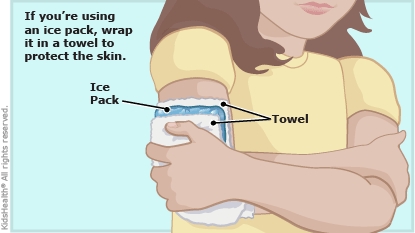Elbow Pain: How to Care for Your Child
Elbow pain can happen for many different reasons, and it can come on slowly or suddenly. Often, elbow pain isn't serious and goes away within a few weeks with rest and basic home care.




What can cause elbow pain? Elbow pain may happen from strain, a tear, or swelling in the:
-
ligaments (bands that connect bones to other bones)
-
tendons (bands that connect muscle to bone)
-
muscles
-
connective tissues (which support the body's organs, bones, and muscles)
Elbow pain also can happen from a deep bruise, or from doing the same motion over and over, such as throwing or hitting. Less common sources of pain include infections, arthritis, cysts, or growths on the bones.
What can help prevent elbow pain? To prevent injuries to the elbow that can cause pain, encourage your child to:
-
Wear the right protective gear during practice and competition (such as elbow pads).
-
Warm up before sports activities.
-
Do regular strengthening and flexibility exercises.
-
Be active year-round, which will help their elbows and the rest of their body stay in good shape.